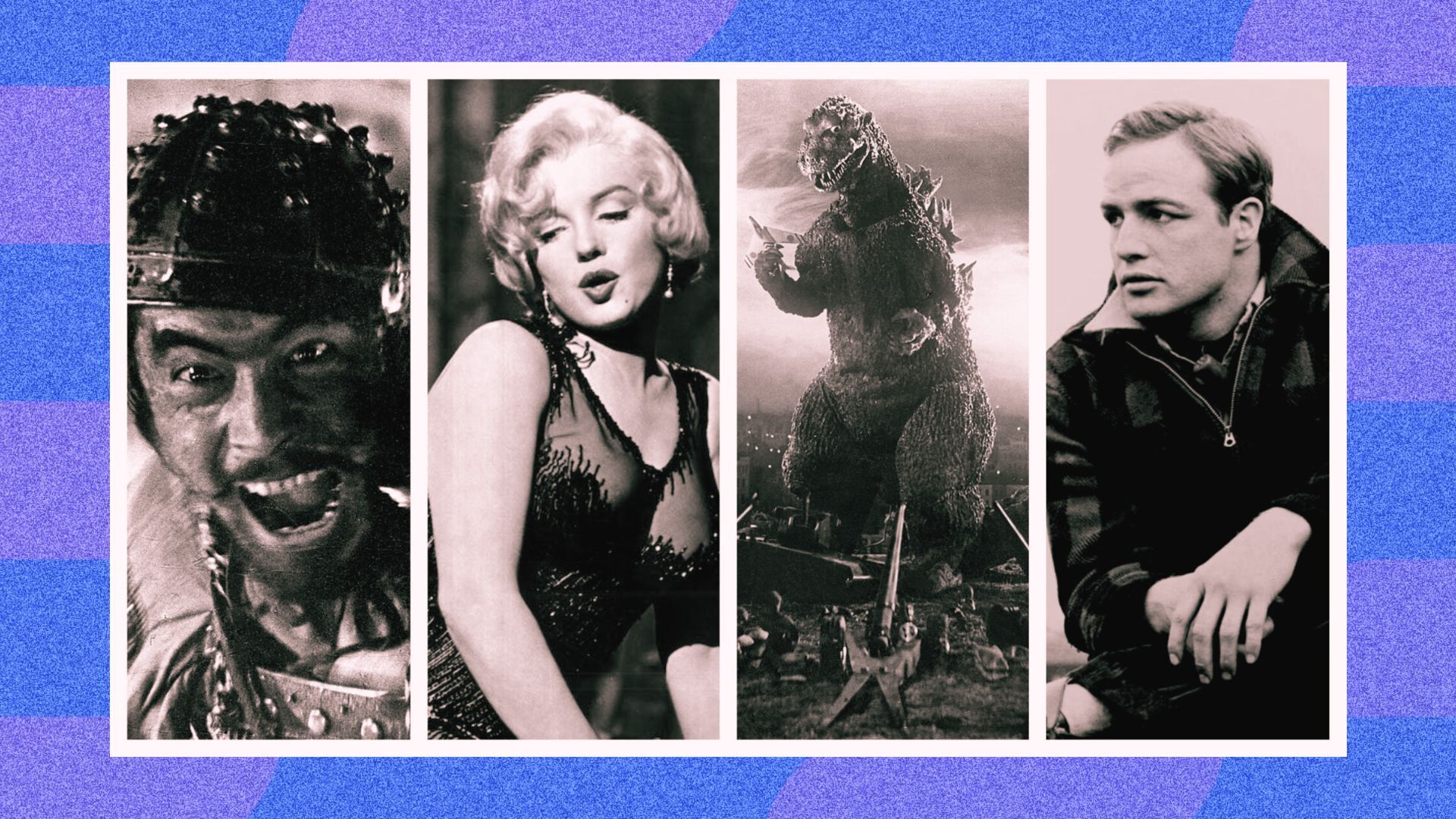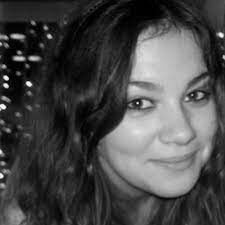The Best 50s Movies: The 25 Greatest Films of the 1950s
Because cinema didn’t start with the French New Wave, kids.


“That’s the trouble with you readers, you know all the plots”. That’s screenwriter Joe Gillis in Sunset Boulevard, churning out two scripts a week to try to land a picture at Paramount.
Everyone knows that in 1950’s Hollywood, studios were cranking out assembly-line westerns, sports stories and bible epics while the system was crumbling around them. Quentin Tarantino even has the 50’s and the 80’s tied for his “worst eras” in Hollywood history.
And yet if you began your film appreciation in experimental 60s and 70s cinema, you’re missing out on some of the best films ever made. We’re talking indelible images, iconic lines and immortal screen performances from Humphrey Bogart, Marlon Brando, Elizabeth Taylor, Marilyn Monroe, Gene Kelly and Robert Mitchum.
Hey, the classics are classics for a reason. Widen the lens further and directors like Akira Kurosawa in Japan, Federico Fellini in Italy and Satyajit Ray in India were making masterpieces throughout the decade.
Here’s our starter list of the best '50s flicks...
1. In A Lonely Place (1950)
Nicholas Ray’s noir has everything you want from the genre. Quotable lines uttered by Humphrey Bogart, a tragic, bittersweet ending and superb performances including from his co-star Gloria Grahame. Bogey plays Dix Steele, a cynical LA screenwriter with a temper, who gets into fisticuffs with friends, foes and fellow drivers so often that his neighbour-turned-lover Laurel Gray begins to suspect him of the murder of a coat-check girl one lonely night. This one really sticks the landing in the tense final minutes.
2. Seven Samurai (1954)
No Seven Samurai, no Jedi, no Spielberg and definitely no Magnificent Seven. Of course, cinematic influences blow back and forth, Akira Kurosawa was watching Westerns but his touchstone three and a half hour epic set in 16th century Japan is just electric to watch, even now.
Get exclusive shortlists, celebrity interviews and the best deals on the products you care about, straight to your inbox.
The first half: a masterless samurai named Kambei is persuaded to protect a village of peasant farmers from forty bandits, so he puts together a group of seven warriors, all with different skills - and weaknesses. The samurai return to the village in time for the harvest and train the farmers to fight. The second half: the final preparations then it’s showtime for the battle to defend it. The action sequences, the scenery, the character moments, Seven Samurai is that rare thing: a visionary film with real heart.
3. Vertigo (1958)
Most of the entries on this list are shot in quintessential 1950s black-and-white, whether for stylistic or budget reasons. Not so Vertigo, Alfred Hitchcock’s god-level psychological thriller uses Technicolor for its own devious purposes, with reds and greens deployed throughout to convey the obsession and confusion at the heart of the film as James Stewart’s detective Scottie Ferguson is hired to follow a friend’s wife, Kim Novak’s Madeleine Elster.
The kind of movie you want to rewatch (and rewatch and rewatch) as soon as the end credits roll, it’s now giving Citizen Kane a run for its money as the best movie ever made in critics lists.
4. The Searchers (1956)
If you can’t get into the Western genre, for its dated, racist tropes, that’s fair enough. But this stunning John Ford Western is the one to make an exception for, while bearing in mind it was made nearly 70 years ago.
The Searchers features John Wayne as a complicated (racist) protagonist Ethan Edwards, a Civil War veteran, and follows his five-year rescue mission through Arizona’s Monument Valley to find his niece, who has been captured by a Comanche tribe. American myths, male isolation, a reconsideration of the Western itself as an artform, it’s all here. And seriously, that final shot.
5. Sunset Boulevard (1950)
“I am big, it’s the pictures that got small.” Are you really a movie fan if you haven’t seen Sunset Boulevard? Billy Wilder’s dark comedy noir sees screenwriter Joe Gillis sucked into the glamorous, reclusive world of Gloria Swanson’s faded silent film star Norma Desmond. With appearances by Buster Keaton (as one of Norma’s ‘waxwork’ friends), director Cecil B. DeMille and gossip columnist Hedda Hopper, Wilder blurs the lines between Hollywood reality and fantasy as only a maestro can. We still can’t believe Swanson didn’t get the Oscar.
6. Godzilla (1954)
If you liked 2023’s Godzilla Minus One, consider returning to the original 1954 Godzilla, directed by Ishirō Honda with special effects by the “father of tokusatsu” and co-creator Eiji Tsuburaya.
Minus One was praised for returning the creature feature series to its post-war, post-atomic bomb roots and in the ‘54 film, we get it all, high and low: explorations of the Japanese national psyche after the bombings of Hiroshima and Nagasaki and a gnarly monster mashing into pylons, train cars and buildings, with streams of people running away screaming. (In fact, a stuntman wearing a monster suit stomping on miniature sets). No wonder it was a huge hit when first released in Japan, spawning 37 remakes and sequels since.
7. Pather Panthali (1955)
If you can see this one on a big screen, do. This is actually the debut film of Satyajit Ray, now considered the ‘father of Indian cinema’, which is astonishing. It’s a social realist story of siblings Apu and Durga, who live with their family in rural poverty in 1910s Bengal.
With genuinely mesmerising images, and a Ravi Shankar score of classical Indian ragas, Pather Panthali shows us scenes of daily life, neighbourhood squabbles, monsoons and everyday tragedies. One that stays with you.
8. Singin’ In The Rain (1952)
Honestly, if Singin’ In The Rain were just 90 minutes of Donald O’Connor dancing, wiggling his nose and running up walls, it would still make this list. As it happens he’s also joined by Gene Kelly (being charming) Debbie Reynolds (being adorable) and the iconic Jean Hagen as actress Lina Lamont who can’t transition to the talkies - movies with sound - because she “cayn’t stand’im”.
Stanley Donen’s musical is a love letter, a send-up, a romcom and a farce, all in Technicolor. Fun fact: Kelly had a fever while shooting the famous sequence with that umbrella and that lamppost in the rain.
9. On The Waterfront (1954)
Marlon Brando “coulda been somebody” in Elia Kazan’s Hoboken crime classic. Brando’s powerful method performance is not just a contender, it’s undisputed as one of the all-time greats, and worth the price of the download alone, with Scorsese, Al Pacino and Jack Nicholson all crazy about his Terry Malloy.
On The Waterfront is also a deftly constructed drama between mob bosses and unionised dock workers, based on writer Budd Schulberg spending two years hanging around the real-life bars and rebel worker meetings on the New Jersey shore.
10. Peter Pan (1953)
Disney put out a number of stone-cold classics in the 50’s including Cinderella, Sleeping Beauty, Lady and the Tramp and yes, Peter Pan: the film that gave us Tinker Bell, Captain Hook and the ticking crocodile. It also gave us Never Never Land and thus, a whole ethos of living for a generation of millennials in city playgrounds who don’t want to grow up. Culturally significant, then.
Peter Pan was also the last time that all of Disney’s ‘Nine Old Men’ worked together as directing animators; so something of an end of an era for the studio that defined all our childhoods.
11. Tokyo Story (1953)
Yes, one of the greatest films of all time is about how you should call your mum and dad. Well, better yet, go visit them or at least invite them to visit you. Japanese director Yasujirō Ozu made a series of these quietly poignant family dramas in the 40s, 50s and 60s and as in Tokyo Story, the film-making is almost always slow, static, minimal, tatami mat-height and just devastating when it chooses to be.
Ozu is interested in urban and rural divides and the influences of the West on Japan but it’s the everyday-ness of his Shomin-geki (common people drama) that really hits home.
12. Some Like It Hot (1959)
Nobody’s perfect but this film sure is. With an all-time dream team of Jack Lemmon, Tony Curtis and Marilyn Monroe, Billy Wilder’s comedy is silly and sexy and still unsurpassed.
Banned on its initial release in Kansas (hilarious), it sees musicians Joe and Jerry - Lemmon and Curtis - hop into drag to join an all-girl jazz band, which includes Monroe’s Sugar Kane, after witnessing a mob hit. It’s an understatement to say shenanigans ensue.
13. Ordet (1955)
I’m an atheist but I’m not gonna lie, this mid-50s Carl Dreyer masterpiece kinda had me believing in god for a minute there. In Ordet, we meet Danish farmer Morten and his three sons - Anders, Mikkel and Johannes. Anders is a Christian but wants to marry a fundamentalist’s daughter, Mikkel is struggling with profound doubts over his faith and Johannes believes he is Jesus Christ.
As these beliefs and fears play out, we get some of the most striking scenes ever shot on celluloid as Dreyer’s eye finds the drama in everything from a coffin to a car’s headlights. Intense but an essential watch.
14. 12 Angry Men (1957)
An American indie from Sidney Lumet, 12 Angry Men is the legal drama to beat all legal dramas. (Yes, we see you, To Kill A Mockingbird).
With Henry Fonda as our hero, Juror Number 8, we’re sweating along with the rest of them in a hot New York City courtroom as the fate of an 18 year-old Puerto Rican boy, who is accused of killing his father, is decided by the all-male jury. A taut, tense, ultimately inspiring thriller that takes aim at the lynch mob mentality.
15. Ikiru (1952)
OK we tried to stick to one film per director, in the interests of not ending up with a list of Hitchcocks, but we had to sneak Ikiru in as a second Kurosawa entry. Because when we say that this film could change your life, we mean it. Takashi Shimura - who played the professor in Godzilla and Kambei in Seven Samurai - is a mediocre public works civil servant in Tokyo.
He is spurred on to try to make just one meaningful thing happen, after he gets a terminal cancer diagnosis. With a bold time jump that ultimately serves to give the film its emotional weight, Ikiru is peerless film-making. Recently made into quite a moving English adaptation, named Living, with a script by Kazuo Ishiguro and a lead turn by Bill Nighy.
16. Cat on a Hot Tin Roof (1958)

Based, of course, on the Tennesse Williams play, it’s Paul Newman, it’s Elizabeth Taylor, it’s two of the hottest people to ever be put on screen, together, acting their pants off. Brick (Newman) is an alcoholic former football player, Maggie (Taylor) is his lonely wife and Brick’s father Big Daddy is turning 65 and dying.
A high-octane drama that’s full of gripping performances, it’s famous for Burl Ives as Big Daddy asking his son, “I’ve got the guts to die - what I want to know is, do you have the guts to live?”
17. La Strada (1954)
Federico’s Fellini’s most well-known films, like La Dolce Vita and 8 1/2, were made in the 1960s but this early 50s showcase for his muse and collaborator, the actress Giuletta Masina, proves that he was always obsessed with the circus in all its forms.
Masina plays Gelsomina who as a child living in poverty is sold to a strongman named Zampanò. What follows are their melancholy adventures on the road, performing on the streets and joining a travelling circus. Make it a double bill with Fellini’s 1957 Nights of Cabiria.
18. The Bridge on the River Kwai (1957)
It wouldn’t be a 1950’s edit without one quintessential Dad Movie. Our pick is British director David Lean’s The Bridge on the River Kwai which ticks all the boxes for that Sunday afternoon slot.
You’ve got a stellar cast, including Alec Guinness and William Holden, you’ve got a two hour forty minute runtime and you’ve got a World War II plot involving prisoners of war, secret missions and yes, bridge building. Tick tick tick BOOM.
19. La Pointe Courte (1955)

Agnes Varda’s first feature-length film is part relationship drama, part almost-documentary and part cat film. Capturing the first moments of what would blow up as the French New Wave in the following decade, Varda’s striking filmmaking sets a young married couple’s sad conversations about their incompatibilities against a backdrop of poor local fishermen and their families trying to make a living and stay out of trouble.
With the bonus of some fabulous water jousting scenes, a sport traditional to the Sète region of the south of France and one that we’d like to play.
20. The 400 Blows (1959)
This is the fantastic coming of age film from Close Encounters of the Third Kind actor (and important French writer-director) François Truffaut. Set in Paris, his alter-ego Antoine Doinel (played by Jean-Pierre Léaud) is the misunderstood kid who wants to run away from his school and his parents, using cinema as a means of escape.
Half the directors on this list — including heavyweights like Kurosawa, Dreyer, Cocteau and Ray — have said this is one of their favourite films.
21. The Seventh Seal (1957)
Is Swedish director Ingmar Bergman’s The Seventh Seal a shaggy comedy, a cerebral fantasy or a chilling horror? Yes is the answer. Talk about tone shifting. This film dips and weaves and laughs and cries just when you least expect it. And the first two minutes are more memorable than the entirety of most movies made today.
Max von Sydow plays a knight named Antonius Block returning from the Crusades to find plague everywhere. He plays chess with Death, goes to confession, meets a circus troupe and eats strawberries in a field. All with visions, brawls, songs and sex all around him. We don’t want to say anymore, just watch it.
22. The Day The Earth Stood Still (1951)
From out of space… a warning and an ultimatum! Robert Wise’s The Day The Earth Stood Still follows the arrival of a tall, friendly alien, played here by Brit actor Michael Rennie (and in a 2008 remake by Keanu Reeves). Klaatu lands his spaceship in Washington DC. He heals fast, carries random diamonds and loves Abraham Lincoln.
He also brings along a big, scary robot named Gort, who is made from a strange metal and can zap weapons and people with his helmet laser. With fans including Arthur C.Clarke, Ronald Reagan and Ringo Starr, this sci-fi flick explores Cold War tensions and the concept of an intergalactic police force. The practical effects still just about hold up and the cryptic meaning of the phrase “klaatu barada nikto” is still much discussed.
23. Pickpocket (1959)

Robert Bresson’s Pickpocket is less than 80 minutes for its total runtime but everything resolves quite neatly by the closing scenes. Classic films simply do not fuck around in the final act. The director states at the beginning that this is not a thriller. And yet. Train station and racecourse scenes, superb choreography of the actors’ sleight of hand and the camera’s movements and focus on hands, items, switches, switchbacks.
All very thrilling, as is typical for Bresson, we get non actor Martin LaSalle as the protagonist Michel, who is Marmite to viewers. And if this doesn’t quite reach the emotional heights of other 1950s films on this list, at the climax of Pickpocket there is an iconic sequence of such pure cinema, you won’t even care.
24. Orphée (1950)
This is a fantasy from the French genius Jean Cocteau, though with more to ground it in reality than some of his other dreamlike films. Cocteau turns the Greek myth of Orpheus venturing into the underworld to save Eurydice into a melodramatic love quadrangle, involving the Princess of Death no less. Here, Orpheus is a poet in 50s France, who ignores his wife to focus on his art.
That’s all in service of Cocteau’s cinematic experiments, though, with practical effects, rear-screen projection, reverse motion and lots and lots of mirrors. The director used liquid mercury for his ‘water-mirror’, as actor Jean Marais’ gloves go ‘through’ the mirror to the underworld. A true magician at work. Nolan could never.
25. The Night of the Hunter (1955)
You cannot take your eyes off Robert Mitchum’s preacher in Charles Laughton’s The Night of the Hunter. Set in Vest Virginia in the Depression, the preacher Harry Powell is in fact a criminal who preys on widows and who sports a couple of tattoos in the form of LOVE on his right hand knuckles and HATE on his left. (Yes, that’s where Spike Lee got it from).
The sight of his hat on the horizon or a glimpse of him at a market stall is enough to chill you to the bone as Powell pursues two young kids to get his hands on a stash of ten thousand dollars. Eerie and sinister for much of the runtime, the film also features one of cinema’s most unique heroines.
Want more? How about the best movies of:

Sophie Charara is a freelance tech and culture journalist. Sophie is a former associate editor of WIRED, and former associate editor at Wareable and The Ambient.
You must confirm your public display name before commenting
Please logout and then login again, you will then be prompted to enter your display name.
![In a Lonely Place (1950) Original Trailer [HD] - YouTube](https://img.youtube.com/vi/68C2IFX60CU/maxresdefault.jpg)















